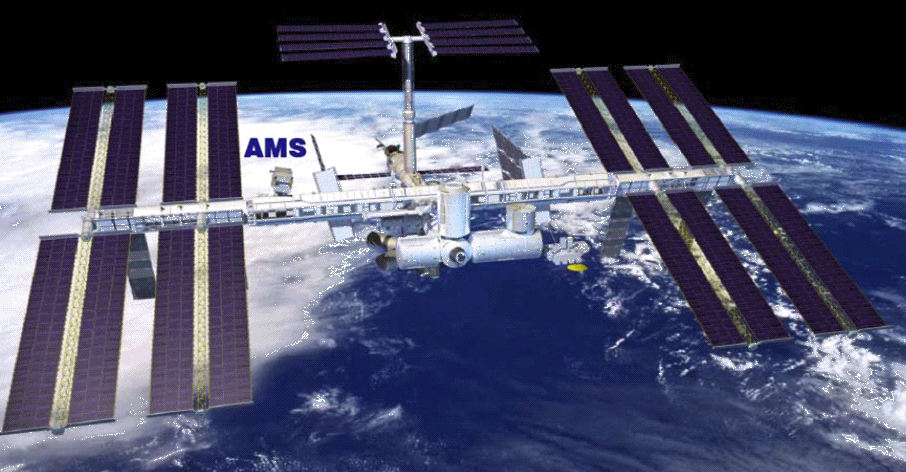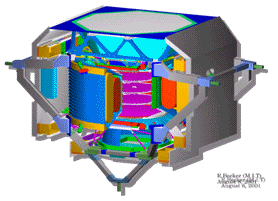ISS-AMS (Alpha Magnetic Spectrometer) Experiment
Responsible Professors
H. Hofer (emeritus), G. Viertel (emeritus); formerly also A. Biland and F. Pauss
Status
ongoing
Description
ISS-AMS is designed to measure precisely charged particle and antiparticle spectra in space. One of the main physics goals is to investigate whether antimatter exists in the Universe today in a measurable quantity. In addition, like in the case of MAGIC, interesting searches for the existence of cold dark matter (CDM) are attempted.
The AMS-01 detector consisted of a permanent magnet, layers of silicon tracking detectors, time-of-flight and Cherenkov counters. Our group contributed to the silicon tracker and electronics and was responsible for the overall detector integration. The detector assembly took place at our Laboratory in Zurich. The AMS-01 experiment was installed on the Space Shuttle Discovery during a 10 days mission in 1998 and demonstrated the feasibility to operate a large magnetic spectrometer in space. From the 100 million events collected several new physics results were obtained (e.g. the Helium to Antihelium ratio, lepton and proton spectra in near earth orbit).
ISS-AMS (AMS-02) has been redesigned to significantly extend its particle identification capabilities, namely the identification of nuclei and their isotopes up to Carbon and the separation of positrons, electrons and protons up to about 1000 GeV. Now the detector comprises, in addition to AMS-01, a transition radiation detector, an electromagnetic calorimeter with 17 radiation lengths, an imaging Cherenkov detector (instead of the original threshold Cherenkov detector) and two additional tracker planes.
Besides the high precision measurements of charged particle fluxes, AMS has significant capabilities for the measurement of high energy gamma rays due to the excellent energy resolution of its calorimeter.
ISS-AMS (AMS-02) was successfully launched into space on Monday May 16, 2011 at 8:56 AM Eastern Time on mission STS134 on board of the shuttle Endeavor. Since then it continuously collects cosmic rays. The AMS team controls the operation of the detector from the Payload Operations and Control Center at CERN in Geneva with strong support from NASA.


